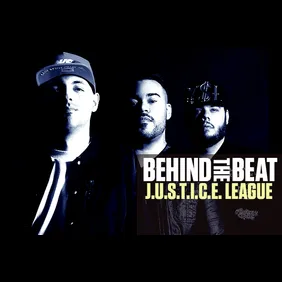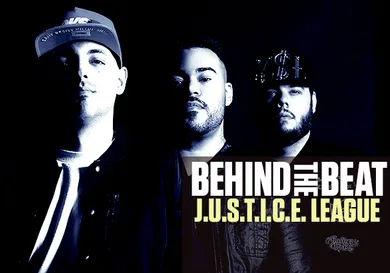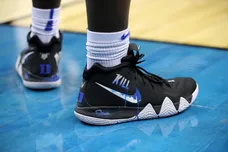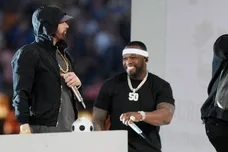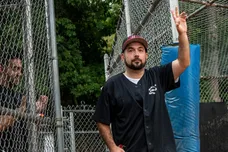J.U.S.T.I.C.E. League was formed in 2003 when Rook and Colione, two established producers in their mid-twenties, teamed up with Kenny Barto, a young Full Sail University student in Tampa, Florida. Their discography hides the years of hard work each put in perfecting their craft. You won’t find obscure local artists or years of mixtape instrumentals among their early production credits. The first 3 entries in their discography on Wikipedia are Young Jeezy, Mary J. Blige, and Juelz Santana. Since then the Florida trio has carved out their own lane, using their impressive sample-recreation and versatility to produce beats for artists like Rick Ross, Gucci Mane, Drake, Lil Wayne, and more. Go behind the beat with the veteran production trio.
...
Hip hop utilizes sampling as a core part of its musical identity. Sampling is inextricably linked to the genre; the first hip hop records produced were made up 100% of overlapping samples and looped records. Sample-based music rose to prominence in the late 1980s and early 1990s, now known as the Golden Era of hip hop, further cementing the connection between hip hop production and samples. However, artists and record labels began suing people who used their samples in reaction to the newfound popularity of hip hop. Sample clearances became the norm, and since then sampling has been subjected to increasing levels of scrutiny as the RIAA and the rest of the music industry watch their profit margins crumble in the face of digital distribution. It’s easy to allow smaller artists to sample your music when you’re selling hundreds of thousands of records per year, but when sales numbers dip and the artist who sampled you is selling twice as many records as you, record companies change their policies quickly. Sampling quickly went from the cheapest way to make a beat to the most expensive.
It’s difficult to say whether hip hop’s sonic evolution is due to the industry’s crackdown on sampling, but J.U.S.T.I.C.E. League finds itself uniquely positioned within that dynamic. Simultaneously bastions of the Golden Era sample-driven sound and at the forefront of the fight for better artist payment industry-wide, they see both sides of the music industry’s lack of coin problem. Rook, who runs the group’s Twitter account, is vocal about artist compensation and the health of the genre.
https://twitter.com/_/status/744625381374894080
https://twitter.com/_/status/744287009590681600
https://twitter.com/_/status/186956793140871169
In the end, the argument for or against sampling in hip hop is about the type and quality of music being made. Sample-driven music has a distinct sonic timbre, both because of the use of live instrumentation and the influences of the super-producers who defined the genre (DJ Premier, Pete Rock and Lord Finesse, to name a few). That same title – ”distinct” – can easily be applied to any production created by the J.U.S.T.I.C.E. League. Few tracks from the Florida trio sound alike, but they are connected by a fullness and lushness that is difficult to find among the digitally rendered productions populating today’s charts. Listening to a song produced by J.U.S.T.I.C.E. League encapsulates what made the 1980s and ‘90s sound so compelling, yet their most prominent hallmark is that they don’t ever use samples. In order to understand J.U.S.T.I.C.E. League's unsampling practice, we spoke with the group and dove into how they construct instrumentals. It goes deep.
The practice of re-creating samples is not new. Sugar Hill Gang’s “Rapper’s Delight,” a song often credited as the first popular hip hop song, used session players to recreate a sample that was looped into the beat. However, recording a cover of a song is one thing. J.U.S.T.I.C.E. League takes things a step further, purposefully changing the instruments used, the key, and other elements to avoid too much similarity. They’ll often go through multiple iterations of each beat in order to avoid the sample clearance issues, but the work is worth it to avoid those fees.
The members of J.U.S.T.I.C.E. League classify themselves as nerds. Specifically, they’re into “nerdy musical shit,” as Rook puts it. What that means is that each member has a near-encyclopedic knowledge of sounds, instruments and effects they can apply. Rook is the self-proclaimed “collector” of the bunch, but when it comes to making music they all chip in. Having three voices in the studio at once can be difficult as everyone tries to exert creative influence over the music. Originally, the group solved this by having each person work on the parts of the song that matched up with their different musical strengths. Over time, osmosis took effect and their skills have all overlapped as they learned from each other.
Now anyone can construct any part of the beat. That intra-group collaboration allows the best ideas to bubble up to the surface. Sometimes, the group lets a single member take the reigns on a song. An example of this is on Rick Ross’ 2010 album Teflon Don. “We had three songs on that album,” says Rook. “It really showcases who we are as producers, individually. We had ‘I’m Not A Star,’ ‘Maybach Music 3’, and ‘Aston Martin Music’. Each one of those was produced by one of us.”
Much like their namesake, they’ll never reveal who did each. Instead, this tidbit will act as a easter egg for superfans to try and identify whose musical guiding hand was behind each instrumental. Their refrain when it comes to this is, “no matter who makes the music, it’s all J.U.S.T.I.C.E. League.”
So how exactly does J.U.S.T.I.C.E. League go about unsampling? Usually, the group models beats based on a sample or sound, with the goal of either re-creating it exactly or making something that sounds similar without being a copy. After the group or the artist picks the sound, the first step is research – something few other beatmakers count as a regular part of their production process. The research isn’t cookie cutter; this is some musical private detective-level digging. “[It’s] about deconstructing the sample, and deconstructing really what went into recording those original instruments,” they explain. “Ok, we have a guitar – what kind of guitar was it? What was the pre-amp? What was the amp? What was the board that it was being recorded to? What kind of tape was it being recorded to? What kind of room was it in?”
Just like an artisanal restaurant might serve a deconstructed dish that has all the ingredients separated, J.U.S.T.I.C.E. League breaks down a sample to its raw musical elements and pieces it back together. Unfortunately, information on what went into a song is less readily available than recipes to your favorite dish. To get that information, the producers track down which studio recorded the sample in question, and then request session reports from that recording session. A session report contains, “the guitar, the amps, the microphones, the tape, the board, the room. And usually back then certain record labels would use certain rooms or certain whatever whatever, so you try to emulate that.”
Once J.U.S.T.I.C.E. League has all the information available about the original sample, they begin the most cumbersome part of the process: recreating every aspect of the original sample, down to the kind of room it was recorded in. This was especially difficult when the group got their start in the mid-2000s, as they had to manually track down very obscure (and often expensive) instruments. Rook is usually the one who puts his foot down, making sure the group gets as close the sound as possible, even if it means extra hours of labor for a difference 90% of listeners probably won’t notice. In recent years, this part of the process has been simplified thanks to the rise of musical emulators. Instead of traveling to different boutique music shops, specific instruments can be recreated via a few clicks on the computer without any loss in quality.
Only once all of these preparations are complete does the group begin making music. They use Logic as their digital audio workstation, mostly because of its suitability for tracking live instrumentation. Melody usually comes first, but that’s more of a habit than a rule. The producers do their best to recreate the original sample, but they change specific elements so that the instrumental can be considered its own music, legally. They might subtly change the type of keyboard used, or even switch to a xylophone instead of a piano. J.U.S.T.I.C.E. League somehow manages to make business logic and music logic work together in harmony, a rare feat indeed.
The whole process used to take J.U.S.T.I.C.E. League a week. These days, they’ve got it down to a science, usually only taking a day or two to complete a beat. It’s a stark contrast to producers who can churn out 10 beats in a few days, but the group values the time they put into their music, and firmly believe it leads to a more soulful, musical product. The artists who receive the beats, often agree via their utter disbelief that the trio are able to achieve what they do. Mixed By Ali, TDE’s in-house engineer, couldn’t believe the production on “Hood Gone love It” was a recreation of the original. As Rook retells, “he hit me up like, ‘Yo, I’ve never heard anyone replay anything exactly how the shit sounds. Are you sure this is not the sample?’” These kinds of stories are legion for J.U.S.T.I.C.E. League. The producers had another song with Mary J. Blige that was created for her Grammy-winning album The Breakthrough, but according to the group the beat they created was too-perfect a rendition of the sample. It seemed too good to be true. “They didn’t believe us, so it didn’t make the album,” they scoff. “We have a copy, but it’s never been released.” Winning a Grammy probably helped soften the bitterness from that incident.
According to the group, their most challenging record to produce was also one of their earliest: “Maybach Music,” off of Rick Ross’ sophomore effort Trilla. Ross wanted to use a sample from a Beatles cover, but owners of the The Beatles’ discography are notoriously difficult (read: impossible) to get clearances from. “We had to do like five versions of it. This was really like our first time into re-creating something,” Rook recalls. “We had to not make it sound like the sample, but have the same vibe.” They went back and forth with Sony, swapping out instruments, re-recording small parts of the instrumental. J.U.S.T.I.C.E. League created those five versions in under 3 days, sleeping at the studio (or not at all). “It was our first song with Jay-Z on it. We were like fuck that, we gonna work.”
The reason for J.U.S.T.I.C.E. League’s approach to music can be traced back to how they learned their craft. Colione started with the keys, learning on a Triton keyboard controller. Rook was a sample guru, obsessively collecting obscure sounds on floppy disks for use on his ASR-10 rack mount keyboard. Kenny was formally trained in the saxophone and music theory, but also grew up playing the keys in church. Music was never far from their families, and the musical pedigree combined with constant exposure gifted each of them with an impressive intuition and appreciation for warm, full sound that live instrumentation gives. As Rook explains about the various tools they learned on, “here’s a keyboard with no sounds. You make your own sounds and make your own music. It’s like oh shit, okay. Damn, I gotta make my own sounds and make my own music? That’s where a lot of our creativity comes from.”
Their strong opinions about how music should be made originally put them at odds with the newer DAWs that were purely digital. Rook used to diss programs like Fruity Loops (pre-FL Studio) and Ableton, but has changed his tune as the programs evolved and gained more production capabilities. Besides, “it’s producing monster shit,” he says, “so I can’t hate on it.”
While J.U.S.T.I.C.E. League has gotten over the new sound that’s dominating hip hop, they haven’t gotten over what they perceive to be seriously unfair treatment of producers and hip hop artists in general. This criticism can be broken down into two complaints: 1) hip hop artists are treated as disposable by record labels industry-wide and 2) artists do not properly value the work that producers do. These two problems are closely related; the industry’s lack of investment in hip hop artists leads the artists and their labels to find ways to cut corners financially. The first expense that goes out the window? Production costs. “You pay for the lights in the studio, you pay for the engineer, but you don’t wanna pay for the producer?” Rook asks. Rhetorical question aside, no one seems ready to answer him.
There’s an embedded racial element as well. “They don’t respect the hip hop producer because most of us are just – I dunno – they wanna give it away for free. We come from the hood, live in our mama’s house."
https://twitter.com/_/status/748563754581954560
https://twitter.com/_/status/743534442212364289
https://twitter.com/_/status/743535069550231552
Chance the Rapper was recently caught up in the middle of this debate, but J.U.S.T.I.C.E. League stresses that “he was just caught in a crossfire of a lot of shit that’s going on in the industry between producers and the music industry, period.” Chance has spoken personally with the producers more than once since the issue was first reported, and everything is cool with them interpersonally. It’s just a matter of royalties, something J.U.S.T.I.C.E. League refuses to be shorted on. They theorize that, “the valuation comes from what [producers] are willing to settle for. If they’re making ten tracks, do they see those ten tracks as $20,000,000 a piece? Or do they see those tracks as $5000 for all of them?” Once you start giving tracks or producer credits away for free, people will take that as the norm and continue to ask for free stuff. Of course, this is easier for producers to do when they downloaded their music software for free, because they have no investment to recoup.
So what does J.U.S.T.I.C.E. League do now? They’ve worked with quite literally the biggest names in hip hop, from Jay Z to Andre 3000 to Lil Wayne. They’re musicians at heart, but with labels increasingly unwilling to pay their rates, they’ve found new ways to share their sounds. They recently put out an album of loosies that were cut from artists’ records for various reasons, Justice For All. The album further demonstrates their ubiquity and versatility, as it includes everything from a Lupe Fiasco and Future collaboration that was supposed to appear on Tetsuo & Youth (“It took a long time for Future’s people to get the clearance. At the end of the day, it didn’t make sense for that album.”) to Kevin Gates. They also have begun packaging some of their hand-crafted sounds so that other producers can benefit from their hard work, and offering live tutoring sessions for budding producers. They’ll continue to put out music, but when asked about their dream collaborations, rappers are not at the top of the list. Instead, they name two music legends: Paul McCartney and Nigel Goddard (of Radiohead). “We’ve done songs with Andre 3000, Jay-Z, all these guys,” they explain. “Let’s aim for the stars. Paul McCartney is a fucking juggernaut.”
JusticeLeague-BTB
